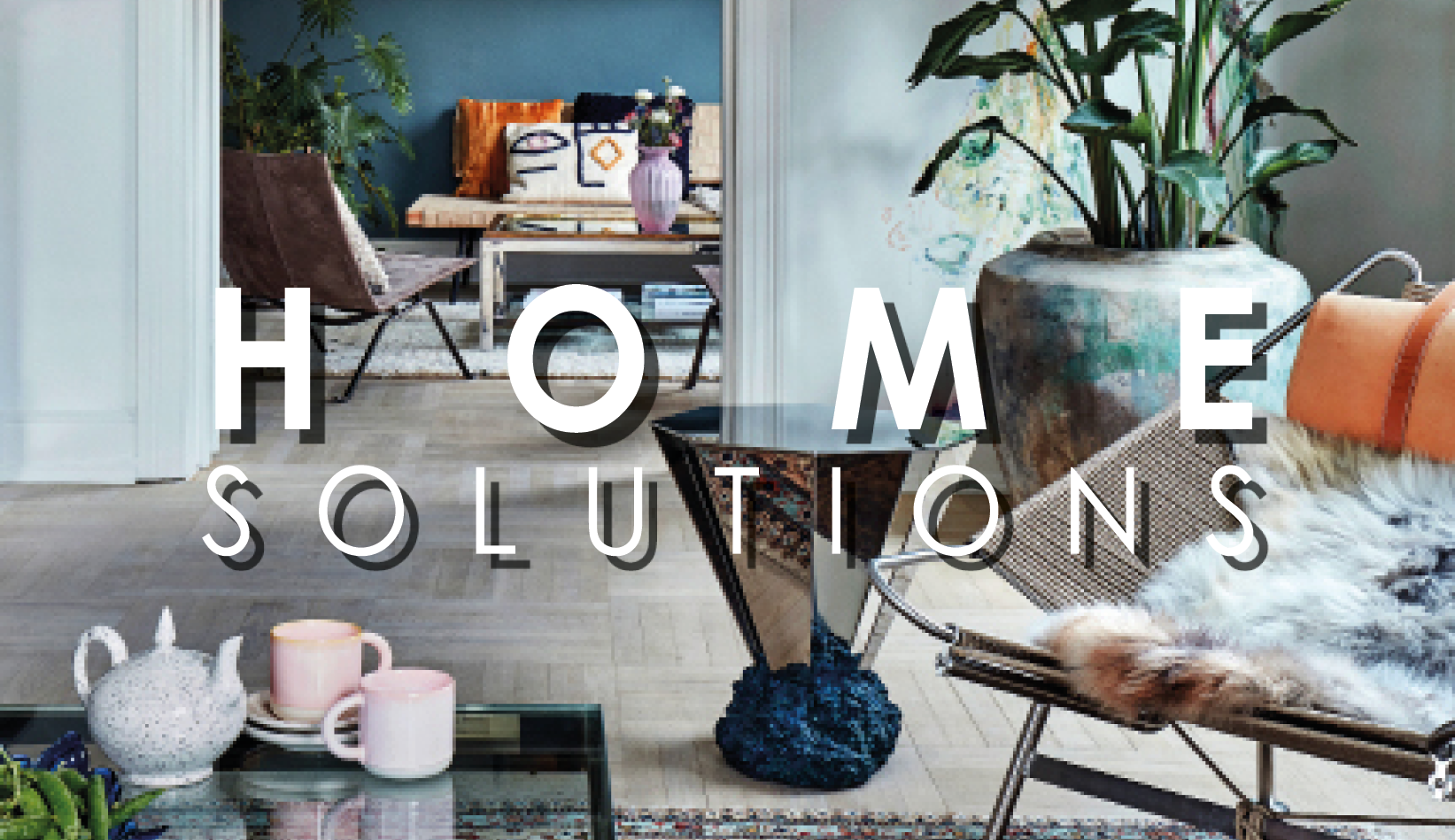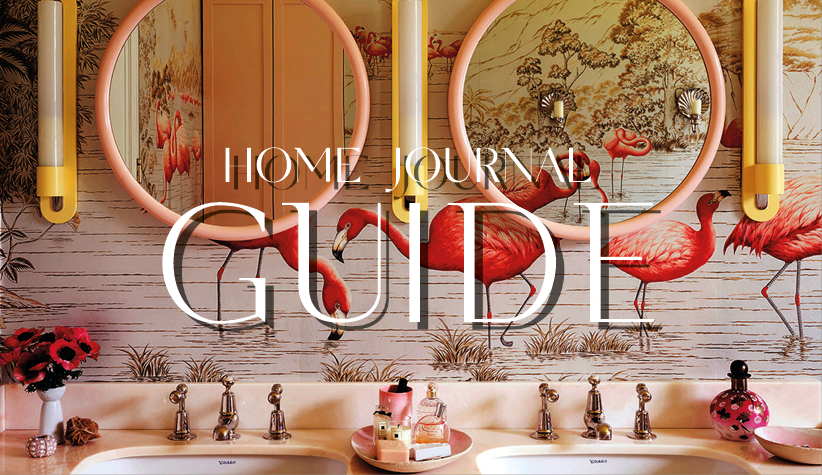Interior designer Sha Wang from Atelier Fēn transforms a cinematographer's Point Grey residence with thoughtful material choices and strategic storage solutions on a modest budget.
"The owner has a deep appreciation for thoughtful, timeless design – something that resonates deeply with our philosophy at Atelier Fēn," says Sha Wang, founder of the Vancouver-based interior design studio. "The brief was not about trends, but about creating a lasting atmosphere – refined, warm and emotionally connected."
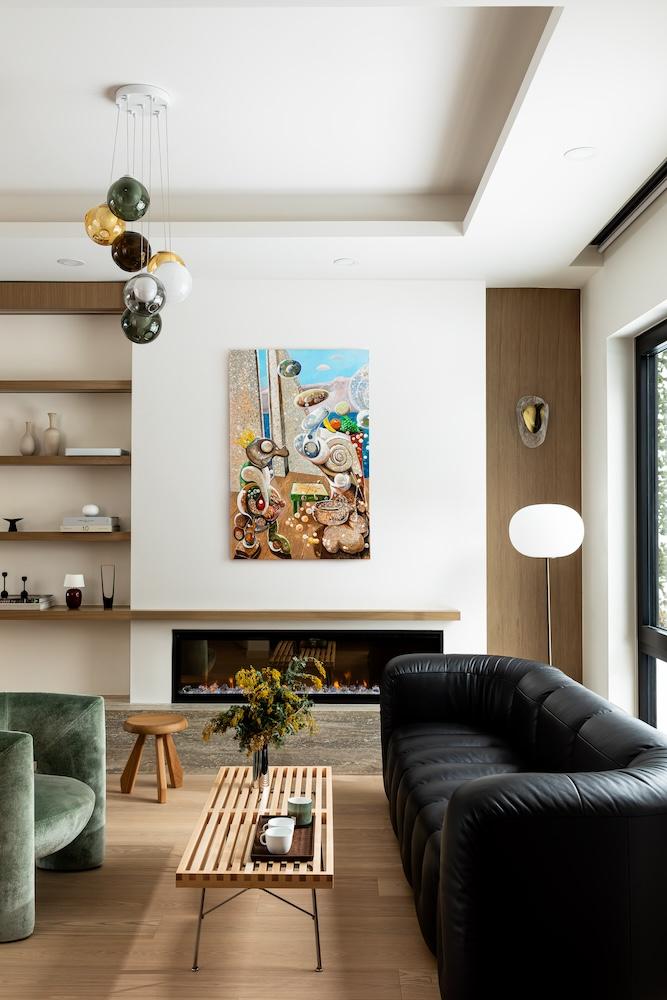
The client, a cinematographer in his early 30s, approached Wang to redesign the main floor of his modern Point Grey home. With a limited budget but ambitious vision, the project required careful planning to maximize both function and aesthetic impact.
The biggest hurdle was creating a sense of spaciousness while incorporating necessary storage throughout the compact layout. "Balancing the need for efficient storage, smart design choices and high-end finishes required a lot of thoughtful planning," Wang says.

To achieve visual coherence across the open-plan living and dining areas, Wang focused on material consistency. "In the living and dining areas, we created visual harmony by repeating key materials -- white oak flooring, painted white millwork, and warm travertine accents," says the interior designer.
These elements flow seamlessly from one space to the next, creating unity while clean lines and simple forms guide the eye across the layout, making the area feel more expansive.

Art selection played a central role in grounding the design scheme. "We treated art as a focal point," Wang says. "In this home, the featured art piece grounds the space with an earthy backdrop that blends effortlessly with the interior's palette. Subtle pops of blue, green, and red draw the eye and introduce a dynamic energy. We echoed these hues throughout the furniture and accessories, creating a cohesive and considered composition."
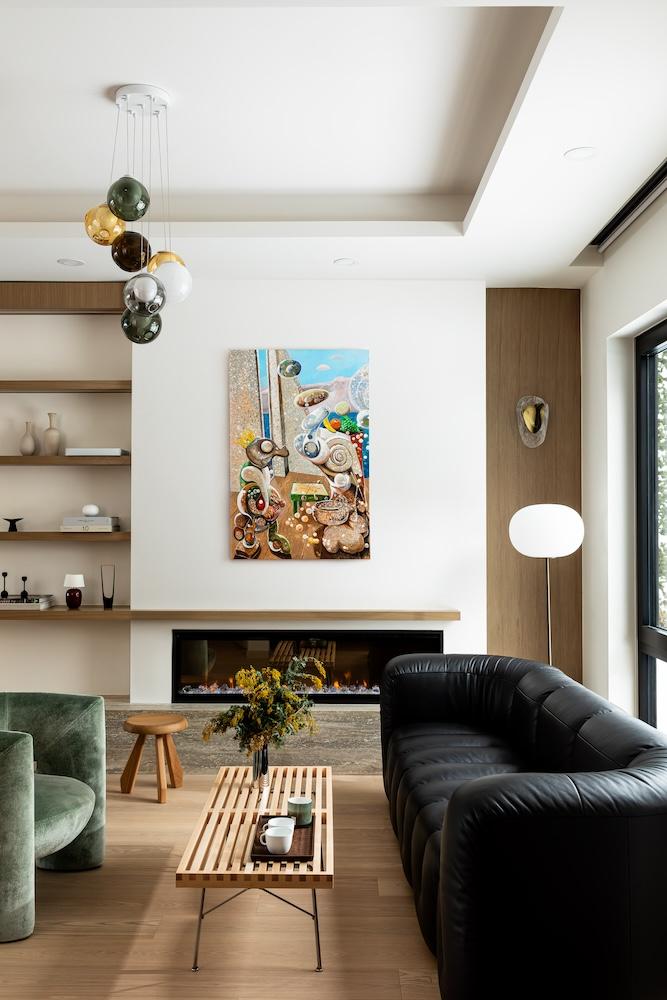
The material palette emphasizes natural textures throughout. "Natural materials like wood, stone, and leather bring richness, texture, and warmth to the space," the interior designer says. "They connect us emotionally to the environment and add a sense of timelessness. These tactile surfaces layer beautifully, enhancing both the visual and sensory experience of the home."
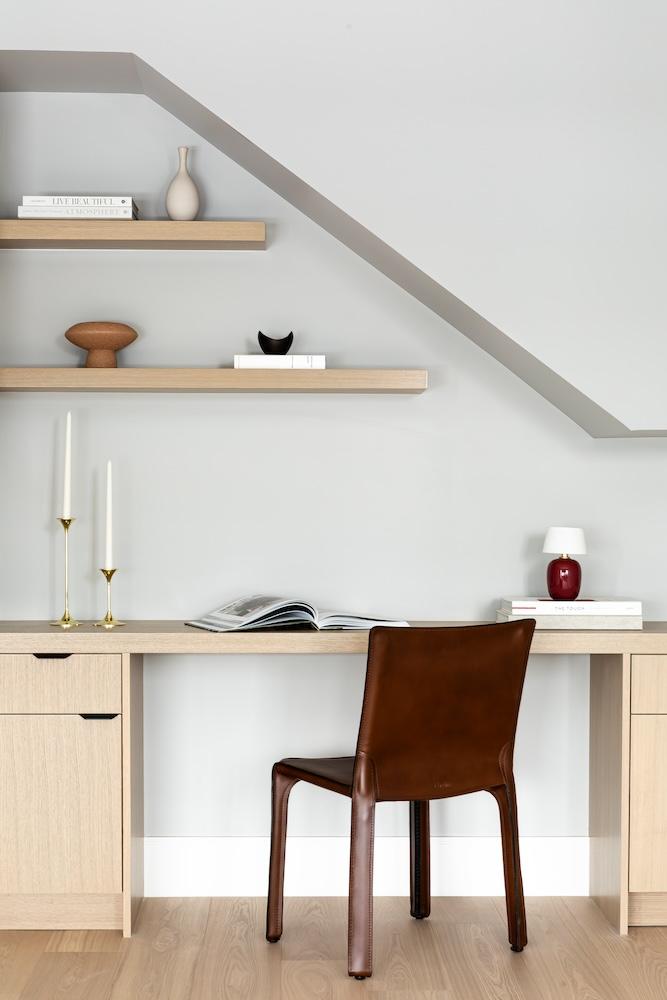
In the dining area, Wang created visual intrigue through careful contrast. "In the dining area, we played with contrast and transparency," Wang says. "A shimmering glass table changes character with the light, casting reflections and shadows that feel almost ethereal. Surrounding it, four Cassina Cab chairs in varied saddle leather tones 'speak' to one another -- each unique, yet in conversation. The mix not only adds visual interest, but also helps anchor the translucent table within the room."

The kitchen features a deliberate black-and-white composition, with appliances hidden behind integrated panels to maintain architectural purity. A glass partition separates the main kitchen from a secondary wok kitchen, allowing natural light to flow while maintaining distinct functions.

The living spaces showcase meticulously crafted built-in cabinetry that appears to float, providing storage without visual weight. The family room flows seamlessly into the living area through a choreographed material dialogue of white travertine, bleached oak, and luminous painted surfaces.
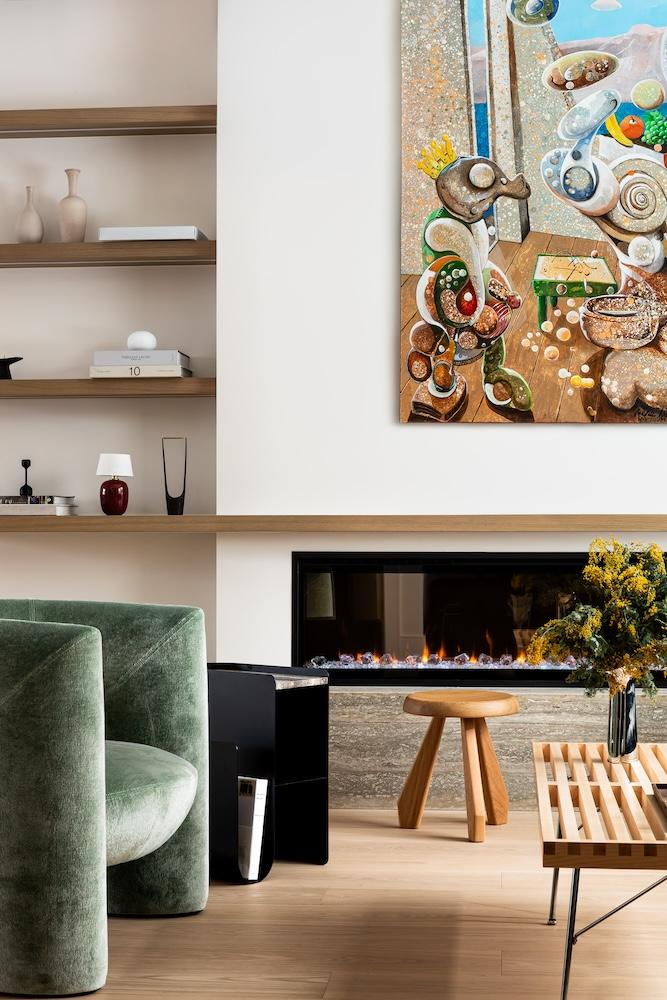
Furnishings include pieces from established design houses: a Glas Italia Shimmer dining table, Cassina dining chairs, a De Sede sofa, and a Nelson platform bench by Herman Miller serving as a coffee table. Artwork by Pepe Hidalgo anchors both the living and dining areas.
"Throughout the home, there exists a delicate balance between negative and positive space, between what is revealed and what is concealed," Wang says. "The result is a home that breathes with quiet confidence, offering moments of understated luxury within a framework of serene simplicity."
Photography: Tina Kulic









